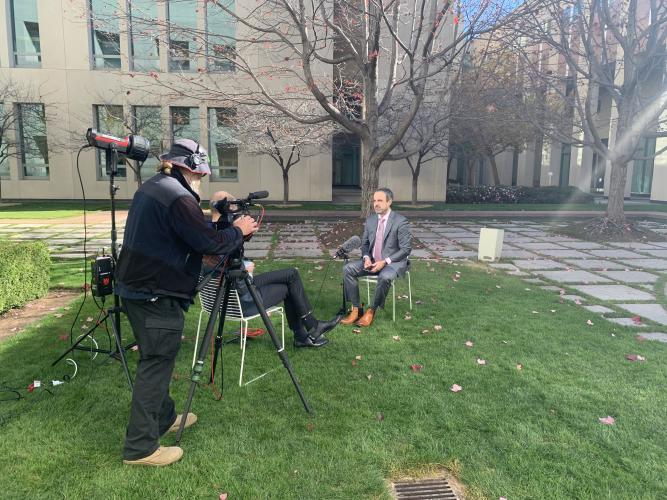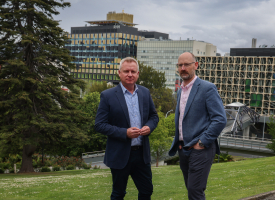Federal Budget must deliver for the four pillars of the health system
With polling consistently highlighting health is a top concern for voters, next week’s Federal Budget is the last chance for Government to demonstrate it is serious about addressing the health system’s significant strains and logjams.

“We’re releasing our full Pre-Budget Submission, including final chapters on private health and primary care, completing our call for urgent and significant investment across the four pillars of preventative health, primary care, public hospitals and private healthcare,” AMA President, Dr Omar Khorshid, said.
“Our pre-budget submission is fully costed and completely implementable. Each chapter is backed by an extensive, detailed and publicly available research paper, highlighting how investment would benefit Australian’s health, and inject much needed resources into Australia’s health system,” he said.
“The pandemic has proven what we’ve always known – health is the best investment a government can and should make. But Australia’s health is far more than just the pandemic, and the AMA expects to see significant investment in this budget – because we know it’s going to be the key issue at the election,” Dr Khorshid said.
The private health system remains at a tipping point, with urgent reform required if the critical balance between the public and private sectors is to survive. The AMA’s Pre-Budget Submission provides a roadmap to improving value and affordability, as well as restoring consumer confidence in private health insurance. A key component of this roadmap is the establishment of an independent authority to oversee the private health system and create a platform for reform.
“Previous attempts at reform have been limited and have not addressed the underlying issues in the private system. Now is the time to agree, and implement, the necessary once-in-a-generation reforms required to ensure the future viability of private healthcare in Australia,” Dr Khorshid said.
“We outlined changes that are needed to make insurance more affordable for consumers in our detailed Prescription for Private Health. We know the Government funded a review as a result – but what we need now is action,” he said.
The AMA is planning to hold a national summit in June this year to push for the next stage of reforms.
“It will require all players in the sector to work together, to ensure a whole-of-system approach that protects patients, while balancing the interests of hospitals, insurers, medical device manufacturers, doctors and most importantly, patients,” Dr Khorshid.
After two years of a COVID pandemic, the front line of the health system – our nation’s GPs and public hospitals – are exhausted, and urgently need investment. In response the AMA has called for a once-in-a-generation investment in primary care to support our GPs, and a new funding agreement to Clear the Hospital Logjam in our nation’s public hospitals.
“General practice is the cornerstone of our health system. But it is not funded to deliver the care that Australians need. We need to invest in general practice, so patients can spend more time with their trusted GPs, access more care under one roof, and be better supported – whether they live with chronic wounds, are in a residential aged care facility, or require care afterhours,” Dr Khorshid said.
“We have called out the $448.5 million cut in promised funding for general practice and the Government’s apparent loss of interest in its own 10-year primary care plan. This budget is the Government’s last chance to deliver on its promises to the nation’s GPs.”
As part of Australia’s prevention agenda, the AMA is calling for a tax on sugary soft drinks to help tackle obesity and other preventable chronic diseases such as type 2 diabetes, heart disease, stroke, and some cancers.
“It is pretty simple – our research suggests it would reduce consumption of these drinks by 31 per cent by 2025-26, and result in government revenue of $2.8 billion across the four years which could be used for further preventative health activities. It’s win-win, and we’ve already launched a public health campaign to educate the public and our politicians about what it could achieve. It just needs government action,” Dr Khorshid said.
“Our hospitals are also currently in crisis due to chronic underfunding, which is why we’re calling for an additional $20.5 billion across four years to create a more equitable 50-50 funding share between the Commonwealth and states and territories and remove the 6.5 per cent cap on growth.
“That is on top of our call for additional partnership funding to improve hospital performance, expand capacity, and reduce avoidable admissions and readmissions. Without it, our hospitals performance and capacity will continue to deteriorate, and the community will continue to be caught in a logjam,” Dr Khorshid said.
The AMA’s Budget submission is available here.
The AMA’s Prescription for Private Health research report is available here.
The AMA’s Putting health care back into aged care report is available here.
The AMA’s Sickly-Sweet campaign, and A Tax on Sugar-sweetened Beverages research report is available here.
The AMA’s Clear the Logjam campaign, and Public Hospitals: Cycles of Crisis research report is available here.



